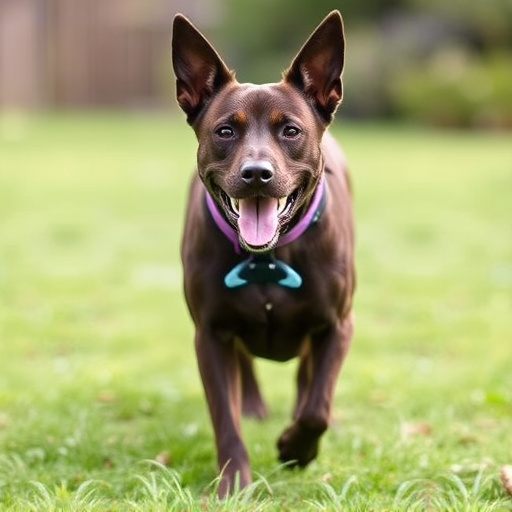Ultrasonic repeller devices, effective against dogs, cats, and rodents, emit inaudible sound waves (22-50 kHz). For best results, mount them high on walls or fences near gardens or patios, oriented towards entry points. Regular testing and adjustments ensure optimal performance. Strategically position devices to cover a wide area, fine-tune settings based on frequency reception, and combine with other deterrents for multi-layered protection.
Are you tired of dealing with persistent pets that intrude on your personal space? Discover the power of ultrasonic dog repellents, a humane and effective solution. This article explores the science behind these devices, guiding you to find the best placement for optimal results. Learn key factors for strategic positioning, ensuring maximum distance control. By understanding how these repellents work, you can create a peaceful environment without compromising your pet’s well-being.
- Understanding Ultrasonic Repeller Technology
- Key Factors for Optimal Placement Strategy
- Effective Distance Control Techniques for Pets
Understanding Ultrasonic Repeller Technology
Ultrasonic repeller technology uses high-frequency sound waves that are inaudible to humans but can deter animals like dogs, cats, and rodents. These devices emit a range of frequencies, typically between 22-50 kHz, which are perceived as unpleasant or even painful to sensitive animal ears. Unlike traditional sprays or electric fences, ultrasonic repellents don’t harm the animals; they simply encourage them to avoid the treated area.
The best placement for ultrasonic repeller devices is in areas where you want to keep dogs away, such as gardens, patios, or entryways. Strategically positioning these devices can help create a protective barrier without causing distress to your pet when they’re indoors. Remember that ultrasonic repellents are most effective when used in conjunction with other prevention methods, like training and positive reinforcement, for long-lasting results.
Key Factors for Optimal Placement Strategy
The best placement for ultrasonic repeller devices lies in strategic locations that maximize their effectiveness while ensuring human and pet safety. Key factors include proximity to areas requiring protection, such as gardens or patios, where dogs are likely to trespass. These devices should be mounted high, typically on walls or fences, to project sound waves across a broader area without direct line-of-sight contact with the target animal. Additionally, orientation is crucial; placing them facing the potential entry points will ensure the ultrasonic signals cover the desired space.
Regular testing and adjustment are recommended. Given that ultrasonic repellers operate on specific frequencies, environmental factors like wind or ambient noise can affect their performance. Therefore, periodic checks to ensure optimal sound projection and frequency reception are essential. Adjustments may be necessary to fine-tune the device’s settings for maximum efficacy while minimizing any potential discomfort to neighboring pets or humans.
Effective Distance Control Techniques for Pets
Ensuring effective distance control in dog repellent devices is key to achieving desired results without causing discomfort to pets or bystanders. The best placement for ultrasonic repeller devices is strategic—place them at a height where they can cover a wide area, often mounted on walls or fences. This positioning allows the sound waves to project outward, creating a barrier that discourages dogs from entering specific zones.
By understanding the range and frequency of ultrasonic signals, pet owners can fine-tune the devices’ settings for optimal performance. Regular testing and adjustments are recommended to adapt to changing environmental conditions, ensuring the repeller’s effectiveness remains consistent. Additionally, combining ultrasonic technology with visual deterrents or scent-based repellents can offer multi-layered protection, making it more challenging for dogs to overcome the barriers.
The optimal deployment of ultrasonic dog repellents lies in strategic placement, considering environmental factors and animal behavior. By understanding these elements, you can effectively utilize distance control techniques to create a safe, harmonious living space for both humans and pets. When implemented correctly, these devices offer a humane and eco-friendly solution, ensuring peace and tranquility without compromising your quality of life or the well-being of nearby animals. For the best results, experiment with different placement strategies and fine-tune distance controls to find the ideal balance that keeps dogs at bay while fostering a serene environment for all.
